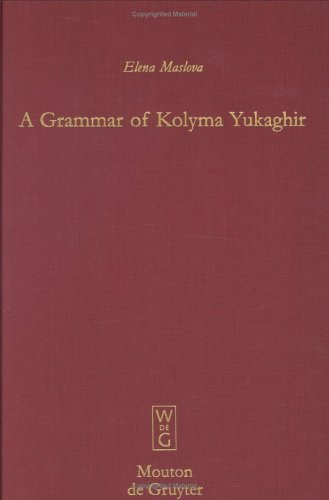

Most ebook files are in PDF format, so you can easily read them using various software such as Foxit Reader or directly on the Google Chrome browser.
Some ebook files are released by publishers in other formats such as .awz, .mobi, .epub, .fb2, etc. You may need to install specific software to read these formats on mobile/PC, such as Calibre.
Please read the tutorial at this link: https://ebookbell.com/faq
We offer FREE conversion to the popular formats you request; however, this may take some time. Therefore, right after payment, please email us, and we will try to provide the service as quickly as possible.
For some exceptional file formats or broken links (if any), please refrain from opening any disputes. Instead, email us first, and we will try to assist within a maximum of 6 hours.
EbookBell Team

4.8
44 reviews
ISBN 10: 3110175274
ISBN 13: 9783110175271
Author: Elena Maslova
Kolyma Yukaghir is a seriously endangered language spoken by about 50 people in the northeast of Asiatic Russia. It is one of the two surviving languages of the Yukaghir family, which is considered by different scholars either as an isolate left over from before the expansion of other languages and language families into Siberia, or as a distant relative of the Uralic family. In many ways, Yukaghir fits the grammatical type widespread among the languages of Siberia, namely that of predominantly verb-final dependent-marking language with relatively rich agglumative morphology and deranking strategies of clause linking. Furthermore, it has a number of typologically remarkably features, which will be of interest to general linguists irrespective of their theoretical orientation. These include Yukaghir focus-marking system, differential object marking based on global effects of person hierarchy, the obligatory use of bound possesive markers to indicate non-coreference of the possessor with the subject, elaborated switch-reference system, initimate interaction between aspect and valence-changing derivation, etc.
a grammar of kolyma yukaghir
a grammar of the ithkuil language
a grammar of the ithkuil language pdf
kolyma yukaghir
a grammar of akkadian pdf
Tags: Elena Maslova, Kolyma, Yukaghir